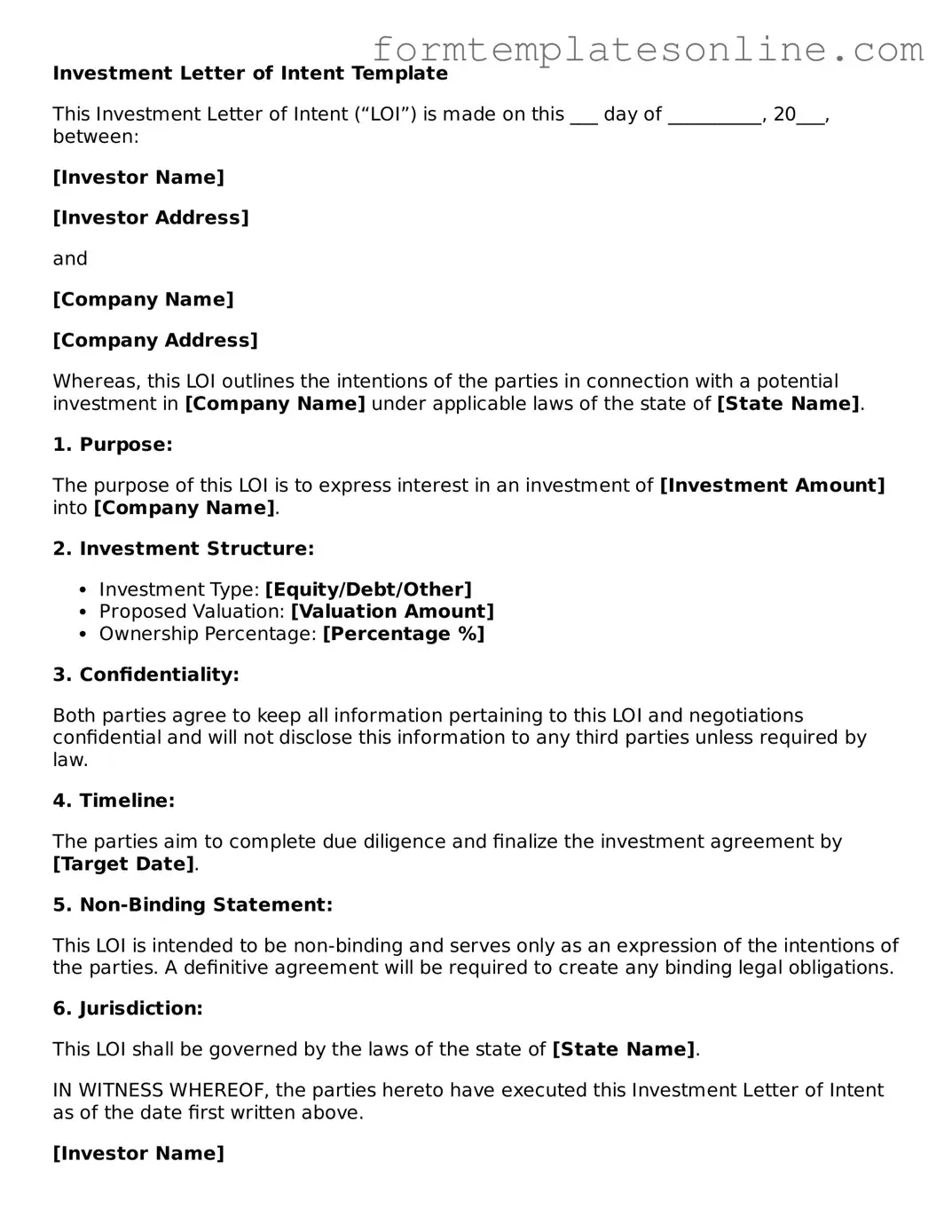Investment Letter of Intent Template
This Investment Letter of Intent (“LOI”) is made on this ___ day of __________, 20___, between:
[Investor Name]
[Investor Address]
and
[Company Name]
[Company Address]
Whereas, this LOI outlines the intentions of the parties in connection with a potential investment in [Company Name] under applicable laws of the state of [State Name].
1. Purpose:
The purpose of this LOI is to express interest in an investment of [Investment Amount] into [Company Name].
2. Investment Structure:
- Investment Type: [Equity/Debt/Other]
- Proposed Valuation: [Valuation Amount]
- Ownership Percentage: [Percentage %]
3. Confidentiality:
Both parties agree to keep all information pertaining to this LOI and negotiations confidential and will not disclose this information to any third parties unless required by law.
4. Timeline:
The parties aim to complete due diligence and finalize the investment agreement by [Target Date].
5. Non-Binding Statement:
This LOI is intended to be non-binding and serves only as an expression of the intentions of the parties. A definitive agreement will be required to create any binding legal obligations.
6. Jurisdiction:
This LOI shall be governed by the laws of the state of [State Name].
IN WITNESS WHEREOF, the parties hereto have executed this Investment Letter of Intent as of the date first written above.
[Investor Name]
_________________________
Signature
[Company Name]
_________________________
Signature
